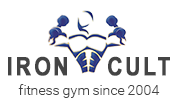Standing Behind Myself
Natalie Goldberg, in her book titled Writing Down the Bones, says, “It is very difficult for us to comprehend and value our own lives. It is much easier for us to see things outside ourselves.” She has an entire chapter written on the topic. She mentions that so many writers don’t believe their writing pieces to be good. I believe this applies to fitness trainers as well.
As a fitness trainer, I write weight training routines effortlessly for my gym clients. I see a client’s current physical status and try to create an effective regime and also make changes, suiting his individual needs. If I personally train a client then I make changes in the daily workout on a micro level. The modification entirely depends on how the client is feeling on that particular day, his previous day’s routine, any existing discomfort, current energy level, etc. For instance, a gym client whom I personally train one day hurt his shoulder–a sudden sharp pain. Although immediate manifestation of an injury wasn’t noticeable, I could sense that the pain could worsen further and result in a severe injury. (Fifteen years of coaching has taught me that injuries related to the shoulders can be dangerously debilitating). Moreover, I can strongly relate to this, as I have had several shoulder injuries over the years and can know how challenging they can be. I immediately took control of the situation. I asked him to abandon the routine, and advised him to ice the area for two days, as that would reduce the inflammation. I also asked him to visit a sports physiotherapist. The physiotherapist diagnosed his shoulder and said that it wasn’t a serious injury. However, I could see that he had lost his flexibility and mobility. After executing several vigorous flexibility enhancing routines, his flexibility greatly improved.
What if I had neglected the sharp pain? It likely would have exacerbated into a grave injury. It may have also resulted in several months of rehabilitation and abandonment of most of the upper body movements. Likewise, imagine if that the same injury had occurred to me. I doubt that I would have taken that immediate action of discontinuing training and visiting a physiotherapist. Ha! Why did I end up with so many injuries throughout the years? Similarly, whenever I thought of writing a routine for myself, I would get utterly lost. Designing a training program for myself was a murky endeavor. In other words, I would be lost in the details. Probably because I undermine my own ability. Analyzing my own strength and weaknesses seemed a difficult task. I couldn’t get a clear vision. However, we need to recognize that we are capable to create something valuable. For ourselves too. As Natalie says, “We should acknowledge our goodness and stand behind it.”
Last but not the least, writing this short essay has enabled me to question myself and face the demon (undermining myself) head-on. For instance, I am now very sure which way I need to head to tackle my genetic condition. Earlier, I was clueless in findings answers to my training questions. Now, I clearly know that I need to adopt a play-like attitude in which I am unaware of my next movement. For example, consider badminton: I am totally unaware where the shuttle cock is going to be placed by my opponent. The game requires spontaneous motion—which I lack. On the contrary, executing a routine in the gym is highly predictable. I assume that the gym routines cannot help me with my condition. However, exercising in the gym has assisted me in staying fit and healthy for a longtime. Injuries can easily occur while playing sports. Muscular strength, endurance and mobility are the prerequisites for staying injury-free. This can be addressed in a gym. This also means that I will have to integrate both strength training and unpredictable play-like attitude to address my genetic condition.
